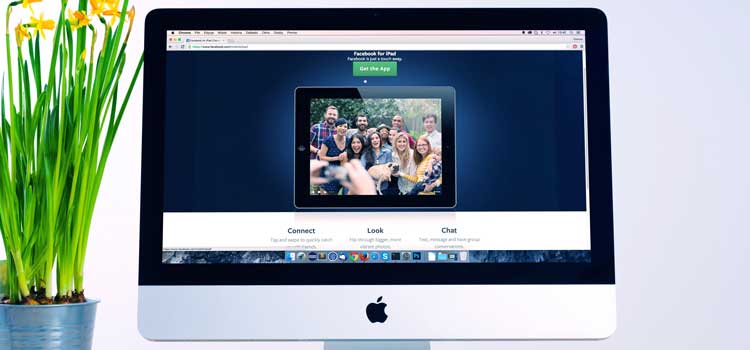Charles Fahlsing has been a member of the Campminder team for years, but he fondly remembers his days as the Director of Camping Services at YMCA Camp AGQ in Michigan. Six weeks into each summer, Charles would watch his staff run the same activity for the 100th time. His focus would be on infusing creativity and ingenuity into these moments to turn a normal day into a memorable one.
When you have more time for thinking, accessing, and planning during the non-summer months, here are five projects that tap into the same energy that helps you run camp each summer, and will contribute to your success in years to come.
Project #1: Update Your Camp’s Website

There’s no question that a professional online presence is key for all camps, and the off-season is a great time to make a project out of improving your camp’s website—and not just through adding content. If you haven’t updated the look and feel of your site in more than five years, it’s time.
For returning campers and new ones alike, your website is the main touchpoint. It’s where new parents and campers get an impression of your camp, where campers register, and where they find out about programs and everything else camp-related.
If you’re prepared to do a significant overhaul, we highly recommend choosing a platform that doesn’t require advanced coding skills, and that comes with preset templates. More than half of CampMinder camps use WordPress to host and build their site (as do we).
In terms of content, we’re going to assume your website has the basics covered including (but not at all limited to) a strong landing page with compelling imagery, easy-to-fill-out inquiry forms, and an About page. For additional content ideas that can improve your chances of making summer camp your best season yet, consider these:
- Current Imagery – Update banners and backgrounds across your site with new photos and create a virtual tour of your camp. See project idea #2 for more details.
- FAQ – Create a Frequently Asked Questions (FAQ) page that leads to a general inquiry form. As you see trends in the questions you’re asked, add them to the FAQ so over time it evolves to respond to the most common needs of parents.
- Facilities Tour – Create a page that highlights details about your facilities with the indoor images you’ve taken as part of project #2.
- Camp History – Share digitized historical documents and photos, with captions that explain as much information as you have about them. If you have photos you can’t place or identify, you can even include a form where alumni can solve the mysteries about when they were taken or who is featured in them.
- Camp at Home – Add a section with song lyrics and guitar chords so campers can host their own sing-alongs. If you have special camp games, share the rules so campers can try and organize them at home.
Whichever approach you choose for website updates, make sure you take advantage of tools that allow you to track what’s working and what needs to be improved. Google Analytics is simple to set up and gives you access to a wealth of information. Another tool we use here at CampMinder is SEMrush, which gives users insight into how their content is performing in search engines and compared to other similar organizations.
For returning campers and new ones alike, your website is the main touchpoint. It’s where new parents and campers get an impression of your camp, where campers register, and where they find out about programs and everything else camp-related.
Project #2: Update your digital presence with new, gorgeous photos of your summer camp

Stellar photos and videos help your campers and prospective campers connect with camp like nothing else. If you’re looking to successfully market your programs to prepare for summer, you can’t overlook the importance of having compelling visuals.
While the most engaging media shows campers doing activities, having fun, and connecting, it can be incredibly useful to have gorgeous shots of your campground and facilities to better market your camp. Typically these photos fall to the wayside in summer or are hard to take because there are kids around. Many have to be taken in other seasons when there are no campers, which makes it difficult for potential campers to get a sense of the natural environment where they’ll be spending their summer.
With your camp closed to kids during the off-season, you have the opportunity to gather images of some of the more beautiful locations at the best time of day. Some ideas include:
- Sunrise/Sunset time-lapses and panoramics
- Nighttime shots with the facility lit up
- Open fields under the stars
- Trails leading into the woods
- Crackling fires
- Canoes and other watercraft
- 360-degree camp tour photos
- Details of indoor facilities such as cabins, beds, pools, bathrooms, or dining halls.
Professional photos are ideal if you have the budget to pay someone, but you can also get solid shots with a smartphone and some well-chosen filters. Want to go the extra mile? Post a request on social media to see if anyone in your community has a drone and flight skills that they’re willing to donate. Aerial photos and videos of your camp can take your marketing to the next level and can help your call for summer camp registration stand out.
Project #3: Develop a fun year-round social media strategy for camper engagement

Social media provides an incredible opportunity for camp directors to connect with campers and families all year long, and it’s one of the biggest drivers of new registrations. It keeps your camp top-of-mind and can help you reach new audiences. Most camps already use social media to share important updates and news, as well as announcements about important dates and registration processes. As you continue to do this, don’t overlook social media for fun ways to sprinkle the camp spirit into the lives of your campers.
To keep everything organized and make the most of your time, leverage social media management tools (such as Later and Hootsuite for two examples) to pre-schedule and track your social media posts. You can plan ahead, manage all your accounts in one place, and use insights to determine what content is getting the most interaction from campers.
Once you’ve got a solid platform and plan, you can start with these five ideas:
- Share the old photos you’ve scanned and ask alumni to identify the people, places, and stories featured.
- Use the new photos you took and post screenshots of small sections zoomed all the way in. Then post the up-close blurry image and see if campers can guess the location.
- Schedule a virtual theme day along the lines of one you would hold at camp and encourage campers to share photos of themselves participating.
- If you’re at camp in the off-season, use Instagram and Facebook Live to broadcast from camp and show campers how their favorite places look in fall and winter.
- Host live ‘Ask Me Anything’ events or Q&A sessions with counselors. Featuring more than just standard content helps connect with campers in more organic ways.
Project #4: Digitize camp archives, historical documents, and old photos

Taking new photos is important, but so is keeping track of older images and documents. We know of so many camps that have stacks of old printed photos, many in drawers or tacked up to bulletin boards. Some camps also have old filing cabinets full of paper documents before everything went digital. A summer without camp is a great time to gather these and scan them. The good news? You don’t need fancy equipment to do this – you can just use a scanner app on your phones, such as Adobe Scan, CamSanner, or TurboScan.
Be sure to also store your newly digitized archive in the cloud using Box, DropBox, or Google Drive. You can create folders to group images by year and session, and others to sort documents by types such as session plans, daily schedules, or old maps. The more information you input, such as titles, descriptions, years, etc., the easier it will be for people to search your archive. If you want to get really fancy, you could use a service such as ResourceSpace to make an extremely robust, searchable database of your images.
Whether you share historic photos and documents publicly, or just digitize them for safekeeping, now is a great time to preserve your camp’s history by storing it in the cloud. Even the longest-tenured directors will still likely have, “I didn’t know about that!” moments. Any gems you find can also be fun to share on social media, especially in the off-season.
You can even make a game of it by sharing old photos and asking your followers to tag the people in them. When camp is back in session next year, these photos and stories can be passed on to the new generation of campers.
Whether you share historic photos and documents publicly, or just digitize them for safekeeping, now is a great time to preserve your camp’s history by storing it in the cloud.
Project #5: Clean and Organize Storage Spaces

The off-season is an ideal time to take on big organization tasks that might fall to the wayside when camp is in session. Some typical locations that might need a little TLC are:
- Arts and Crafts Areas
- Costume Bins
- Office Drawers and Closets
- Tool Sheds
While each type of supply is going to need its own system, there are some approaches that work for all of them.
- Start with a Marie Kondo-style clean-up where you get rid of anything that is beyond use. If it doesn’t bring you joy (and just brings you more work) bid it farewell.
- Sort supplies by project, so things that will be used together are in the same section.
- When you know what new materials you need, create an Amazon wish list and encourage camp families to make donations of supplies at whatever financial level they’re comfortable with.
- As you complete your organization projects, consider using an Excel spreadsheet, or a snazzy inventory app such as Sortly to keep track of what you have at the start of summer, and what you need as your sessions progress.
Organizing your supplies will help with overall camp operations moving forward. Counselors will be able to easily find what they need without wasting time or asking others to help. Plus, your new tracking system means you will know when more supplies need to be ordered.
Use your off-season to take on some helpful projects
These project ideas can help you shake up your days away from camp. Whether it’s updating your website and social media, archiving photos and protecting your camp’s history, or any other tips here, we have confidence that your enthusiasm for these projects, and your ability to pull the right levers, will make every summer your best season yet.
